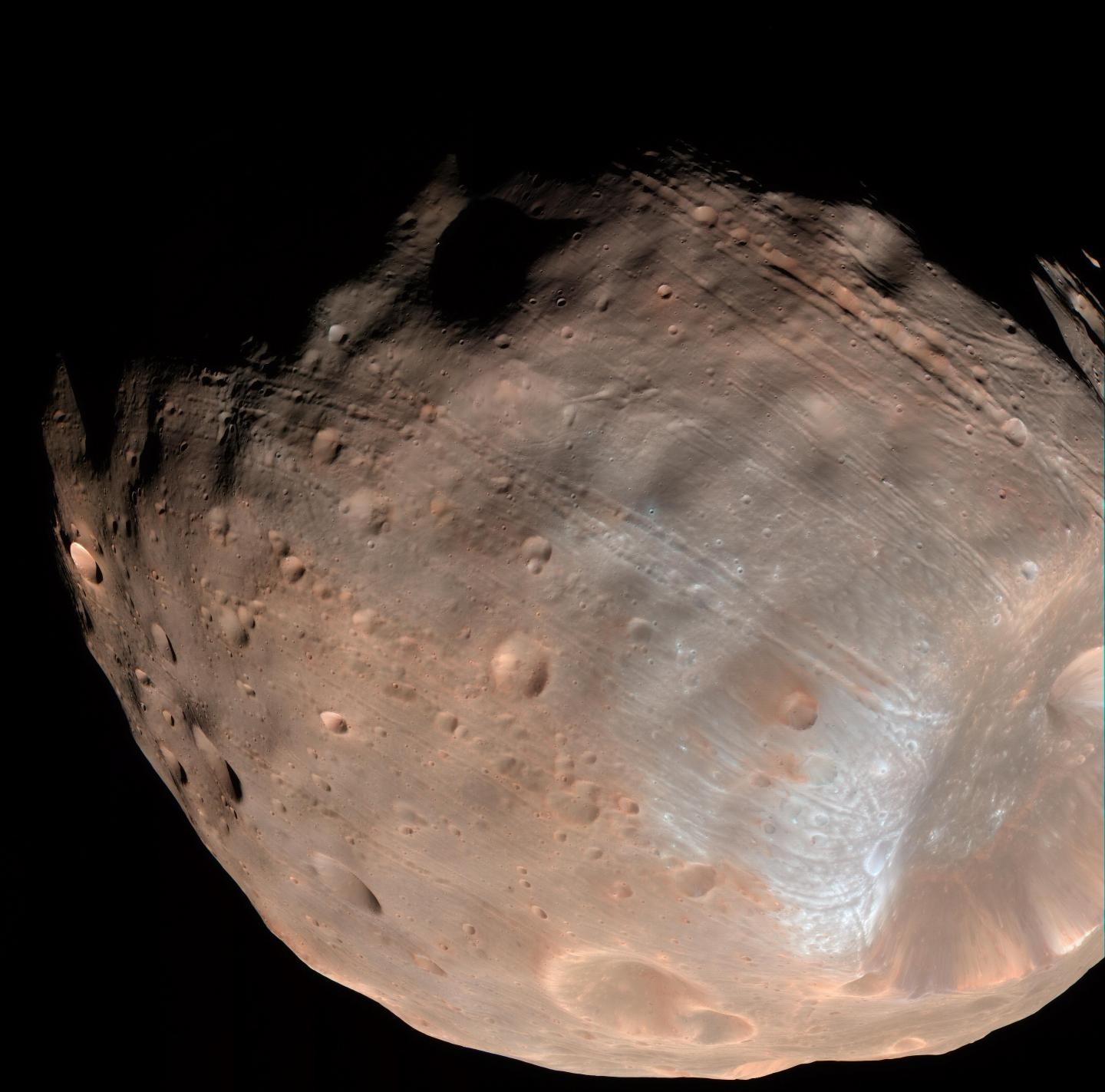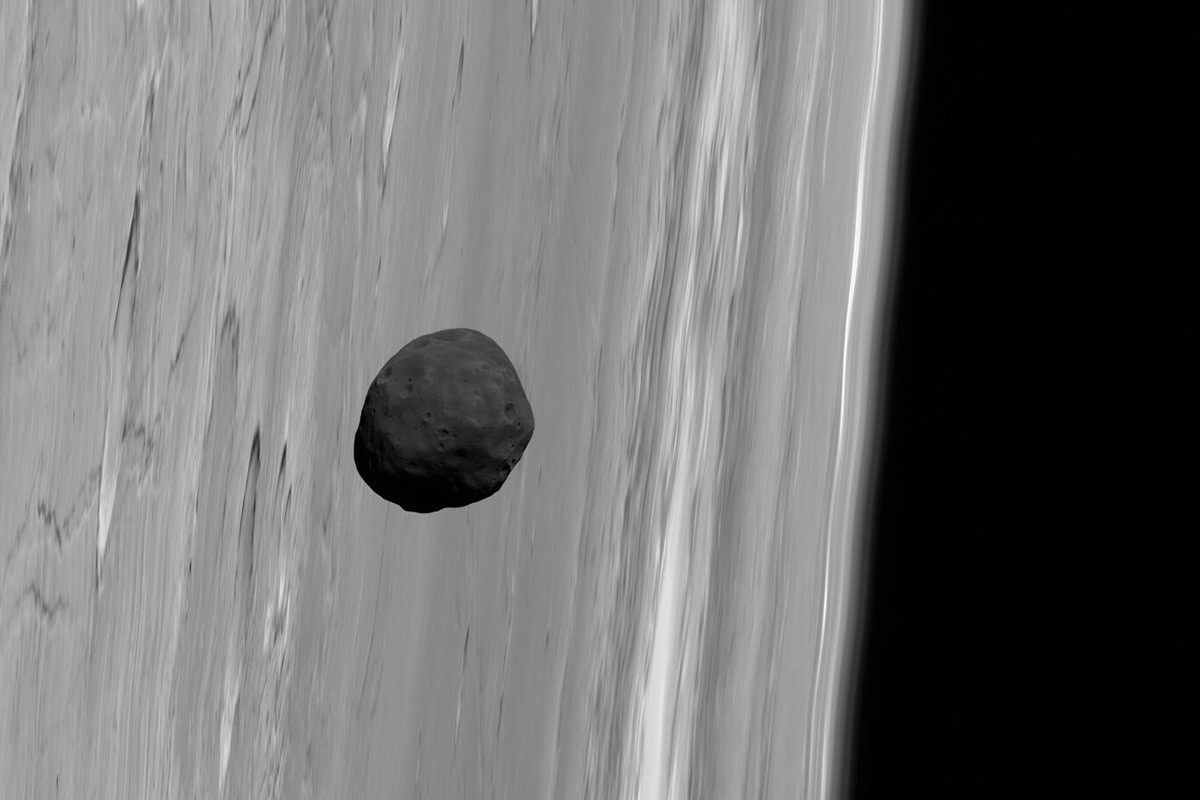A recent study suggests that Phobos and Deimos, the two moons of Mars, are the remains of an ancient common body, disintegrated between 1 and 2 years ago, 7 billion years. This work has also confirmed that the larger of the two, Phobos, is already doomed.
Mars has two moons today, Phobos and Deimos. The latter have quickly intrigued researchers since their discovery in 1877. For one thing, they are tiny. The diameter of Phobos does not exceed twenty-two kilometers , while Deimos measures about twelve kilometers wide. They also have very irregular shapes, similar to old potatoes.
This peculiar physics has already led researchers to suspect that these two moons could be asteroids once captured in Mars' gravity field. But this idea does not hold. The captured objects should indeed follow an eccentric orbit around the planet, and this orbit would be at a random inclination. However, the orbits of Phobos and Deimos are almost circular and move in the equatorial plane of Mars.
But then, how to explain the current orbits of these two moons? To try to understand it, researchers from the University of Zurich relied on computer simulations. The idea:to trace the orbits through time.

All stars exert tidal forces on each other. These forces lead to a form of energy conversion called "dissipation", the scale of which depends on the size of the bodies involved, the distance between them, but also on their internal composition.
Previous studies have already suggested that Phobos and Deimos are made of porous material. They are therefore very sparse (less than two grams per cubic centimeter compared to 5.5 grams per cubic centimeter on average on Earth).
Based on these results, the researchers ran several computer simulations in an attempt to track the moons' orbits backward in time. There then came a time when the two moons crossed in exactly the same place. In other words, it was at this precise moment that Phobos and Deimos were born. According to the simulation, this pivotal moment occurred between 1 and 2.7 billion years ago .
Researchers conclude that a larger celestial body was orbiting Mars at the time, and that this moon was likely hit by another body before disintegrating . Phobos and Deimos would be none other than "the remains of this lost moon" , can we read in the journal Nature Astronomy .
We still lack data to refine these estimates. It all really depends on the physical properties of Phobos and Deimos. A Japanese probe, whose launch is expected in 2025 , could provide us with additional details. It will indeed be a question of bringing samples of Phobos to Earth. The analyzes that will follow will make it possible to better characterize the interior of these two Martian moons, and therefore to better understand their origin.

It also emerged from this study that the common ancestor of Phobos and Deimos was farther from Mars than Phobos is today. While the second has remained close to where it was born, tidal forces are pushing the first to get closer to Mars…. dangerously.
Indeed, thanks to computer simulations, the researchers were able to go back in time, but also to "see the future" by estimating the future development of the orbits of the two moons. And if it appears that Deimos will move away from Mars very slowly, just as our moon is slowly moving away from Earth, Phobos will crash into Mars in less than 40 million years> . It's also possible that she gets "torn apart" by her planet's gravitational forces before she even hits the ground.